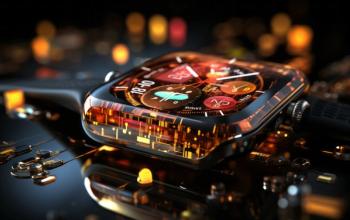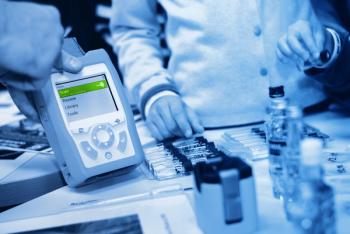
Advanced Portable Instrumentation
As portable instrumentation continues to find commercial success as viable alternative to traditional laboratory equipment, factors such as ruggedness, sensitivity, speed, and reliability become increasingly important. In this session sponsored by the Coblentz Society, five presentations will discuss handheld instrumentation for techniques including ion mobility spectrometry (IMS), energy dispersive X-ray fluorescence (EDXRF), laser-induced breakdown spectroscopy (LIBS), Raman and FT-IR spectroscopy, and UV, visible, and NIR spectroscopy.
As portable instrumentation continues to find commercial success as a viable alternative to traditional laboratory equipment, factors such as ruggedness, sensitivity, speed, and reliability become increasingly important. In this session sponsored by the Coblentz Society, five presentations will discuss handheld instrumentation for techniques including ion mobility spectrometry (IMS), energy dispersive X-ray fluorescence (EDXRF), laser-induced breakdown spectroscopy (LIBS), Raman and FT-IR spectroscopy, and UV, visible, and NIR spectroscopy.
The first presentation will be given by David Jones of Sandia National Laboratories and will discuss an IMS trace explosives detector based on the capacitive-transimpedance amplifier technology used in infrared imaging. The title of the presentation is “Capabilities of a New-Generation Hand-Held Ion Mobility Spectrometer.”
Joachim Heckel of Spectro/Ametek will present a talk titled “Possibilities and Limitations of Hand-Held EDXRF Instruments in Analytical Practice.” His presentation will report the use of portable EDXRF for positive material identification and for matrix and mass area independent analysis. He will discuss a special fundamental parameter approach to overcome the technique’s inability to measure matrix elements such as H, C, N, and O of plastics, organics, and other materials.
The next presentation in the session, “Criteria and Potential for Hand-Held Laser-Induced Breakdown Spectroscopy,” will be given by Ben Smith of the University of Florida. He will discuss the specific design criteria necessary to design a handheld LIBS instrument. Difficulties include the processing and display of large amounts of data in a compact interface.
Christopher Brown of Ahura Scientific will present “New Developments in High Performance Handheld Raman and FTIR Instruments.” The talk will present an overview of technical developments in the field and will compare performance of handheld Raman and FTIR systems with that of laboratory instruments.
The session’s final presentation, to be given by Jason Eichenholz of Ocean Optics, is titled “Design Optimization of Compact and Portable UV, Vis, and NIR Spectrometers.” His talk will discuss typical applications and will explain how to optimize the design of a miniature spectrometer. He also will cover the design tradeoffs of the instrument, specifically the size and design of the optical bench and choices for the entrance slit/aperture, the dispersive element, and detection methods.
Newsletter
Get essential updates on the latest spectroscopy technologies, regulatory standards, and best practices—subscribe today to Spectroscopy.





